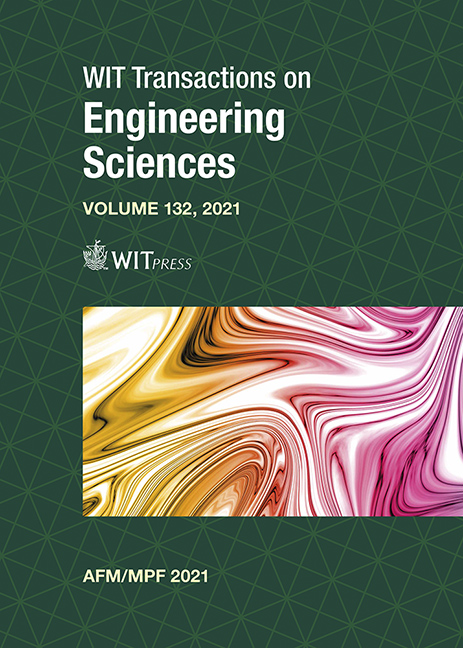COMPUTATIONAL AND EXPERIMENTAL STUDY ON RING TONE
Price
Free (open access)
Transaction
Volume
132
Pages
11
Page Range
141 - 151
Published
2021
Paper DOI
10.2495/MPF210121
Copyright
Author(s)
KAZUO MATSUURA, KOH MUKAI, MIKAEL ANDERSEN LANGTHJEM
Abstract
Sound produced when jets issued from a circular nozzle collide with a downstream ring coaxial with the jet is called ring tone. The ring tone is investigated through experiments and direct sound computations. The inner diameters of the circular nozzle exit and the ring are both 30 mm. In the experiments, the frequency spectra of the ring tone are measured for various impingement lengths of 20–40 mm and jet velocities of 5–15 m/s. The tone is also compared with the hole tone, in which the downstream ring is replaced with a plate with a hole. As a general trend, the peak sound intensity shifts to higher frequency as the jet speed is increased in both tones. Multiple series of peaks are observed for each impingement length. While the peaks generally become higher with increasing jet speed, the amplification is not necessarily monotonic. When the ring tone is compared with the hole tone, the peaks are much lower and the frequency distribution is broader. Regarding the variation of the dominant ring-tone and hole-tone peak frequencies with jet speed, differences between the ring tone and hole tone appear at the locations of mode jumps. In the computations, the onset of self-sustained feedback oscillations in the ring tone is clarified from the view point of the throttling mechanism originally proposed for the hole tone, i.e., the coupling between the mass flow through the ring, vortex impingement and global pressure fluctuation.
Keywords





